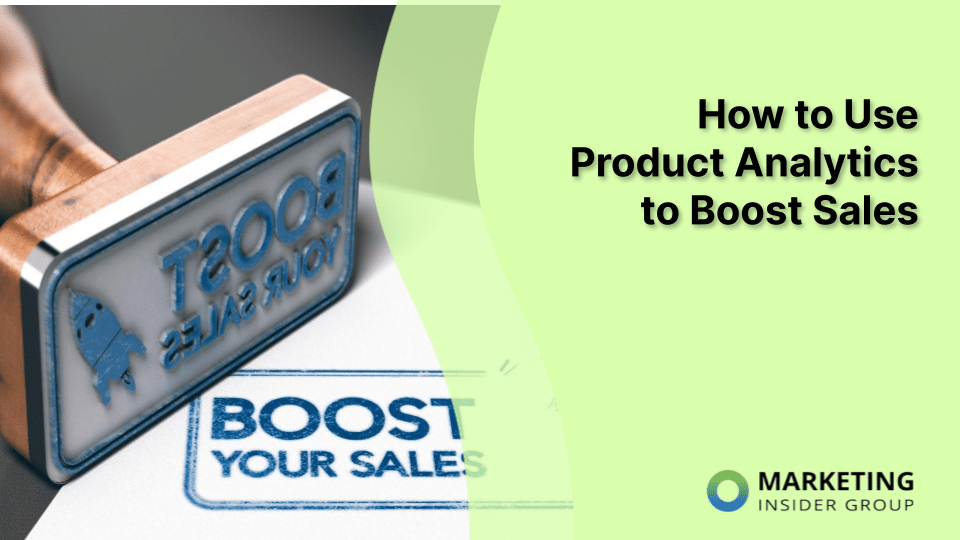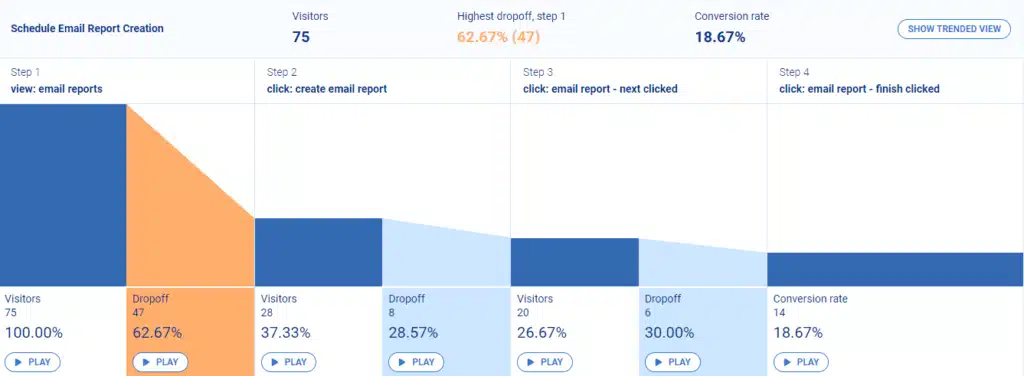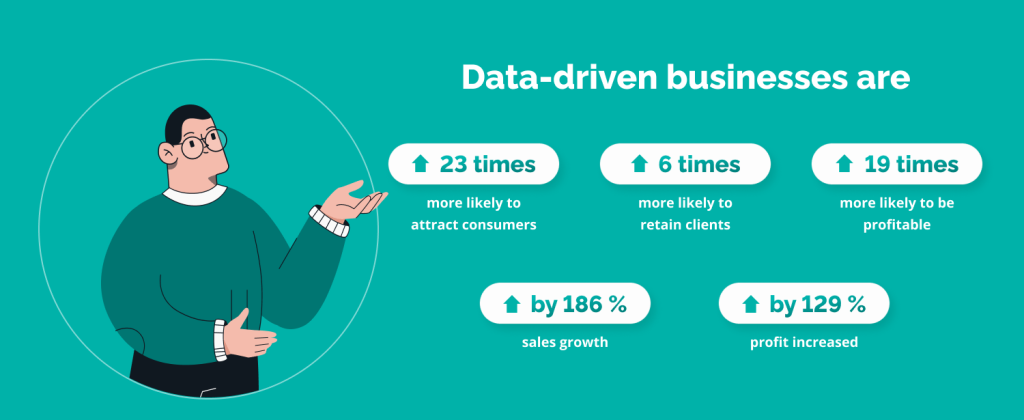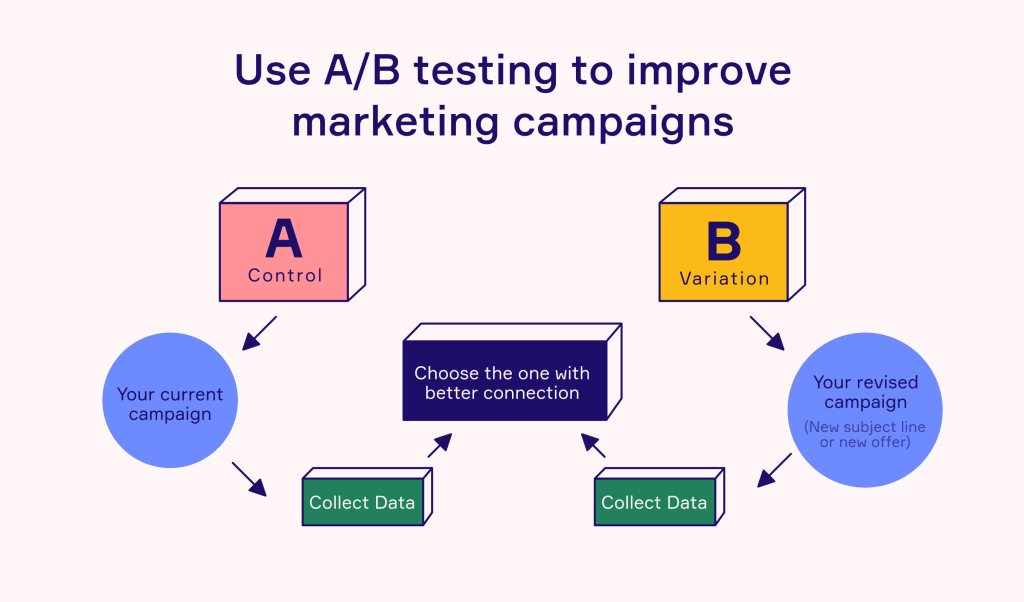
How to Use Product Analytics to Boost Sales
Sales are one of the most vital aspects of running a business and aren’t something you’ll want to take lightly. Every transaction represents revenue and growth, and luck isn’t enough because boosting your sales requires insight, strategy, and precision.
Fortunately, product analytics can guide you along the path to sales mastery. This powerful tool reveals the mysteries of customer behavior, preferences, and trends, so you don’t have to go blindly into the abyss.
Product analytics isn’t just about numbers; it’s about understanding the heartbeat of your audience and crafting experiences that resonate with them. This guide will show you how to leverage data and the transformative power of product analytics to supercharge your sales outcomes.
Quick Takeaways
- Product analytics can unlock the secrets of customer behavior, leading to more sales.
- It uses customer data to offer insights that can help you make more informed decisions.
- Measuring and optimizing vital metrics like conversion rate and customer lifetime value are part of the process.
- Testing your findings helps you stay ahead of the competition.
Understanding Product Analytics
You’ll have to understand product analytics and the customer insights they provide before using them to your advantage.
In short, product analytics involves collecting, measuring, and analyzing how customers interact with your products, services, and marketing content. It’s like having a digital magnifying glass that helps businesses see what’s working and what’s not in their sales strategies.
Imagine product analytics as your business’s GPS. It guides you by showing where your customers are coming from, what they’re doing on your website or app, and where they’re dropping off. This information helps you make smarter decisions to drive more sales.

By understanding customer behaviors and preferences, you can tailor your sales strategies to meet their needs. As a result, product analytics helps businesses make informed decisions that drive growth and success.
Setting Up Your Product Analytics
Organizing your product analytics is like packing your suitcase before leaving on a long trip. Correctly setting everything up ensures you have all the resources you need to navigate and succeed, no matter what comes your way.
To start, you need the right analytics tools to understand your customers. Popular options include Google Analytics, Mixpanel, and Amplitude. These tools help you track customer behavior, measure performance, and identify opportunities for improvement.
Steps to Set Up Product Analytics
As you set out, you’ll need to follow a few steps to put yourself on the right track:
- Identify Your Goals: Knowing what you want to achieve before diving into analytics is essential. Whether increasing sales, improving customer retention, or enhancing user experience, clarifying your goals helps you focus your efforts.
- Define Key Metrics: The key metrics you select will define the customer data you track. For instance, conversion and churn rates provide valuable insights into your business’s health and performance by showing how many visitors are buying and how many are leaving without a sale.
- Integrate Analytics Tools: Once you’ve chosen your tools and defined your goals and metrics, it’s time to integrate them with your product. This step involves adding tracking codes or plugins to your website or app, allowing the analytics tools to collect data on user interactions.
Almost 90% of customers say the experience a company offers is as vital as the product, so understanding where your presentation is succeeding and where it might be failing is essential. Following these steps lays the foundation for effective product analytics, empowering you to make data-driven decisions that drive sales and business growth.
Figuring Out Your Key Metrics
Understanding key metrics is like having a roadmap to guide your sales efforts. This information helps you navigate and focus on elements that drive your success. Key metrics you might want to track include:
Conversion Rate
This metric tells you the percentage of website visitors who take a desired action, like making a purchase or signing up for marketing emails. To measure and improve it, track how many visitors convert into customers and identify barriers or friction points in the conversion process. For instance, simplifying the checkout process or offering incentives can help increase conversion rates.
Customer Lifetime Value (CLV)
CLV measures a customer’s total revenue over their entire relationship with your business. It’s important because it helps you understand the long-term value of acquiring and retaining customers. Calculating CLV involves determining an average purchase value, purchase frequency, and customer lifespan.
Average Order Value (AOV)
AOV represents the average amount a customer spends per transaction. Increasing AOV involves strategies such as upselling or cross-selling related products, offering discounts on bulk purchases, or implementing minimum order thresholds for free shipping.
Customer Acquisition Cost (CAC)
CAC measures how much it costs to acquire a new customer. By comparing CAC to CLV, you can assess the effectiveness of your marketing and sales efforts. Lowering CAC involves optimizing marketing channels, improving targeting, and enhancing the efficiency of your sales funnel.

Focusing on these key metrics and implementing strategies to improve them can help businesses boost sales and drive sustainable growth.
Analyzing Customer Behavior
Understanding customer behavior is like deciphering a map. When you use it correctly, it reveals valuable insights that can lead to greater success in sales.
- Customer Journeys: Customer journeys are paths people take, from discovering your product to making a purchase. By analyzing these journeys and identifying touchpoints, you can pinpoint where customers are dropping off and optimize those areas for better conversion.
- Audience Segmentation: Segmenting your audience based on behavior and preferences allows you to tailor your marketing efforts to specific groups. This personalization increases relevance and engagement, leading to higher conversion rates.
- Heatmaps: Heatmaps visualize where users click, scroll, and spend time on your website or app. By analyzing these insights, you can uncover patterns, preferences, and pain points, enabling you to optimize user experience and drive sales.
Customer behavior shows you what’s working and what isn’t so you can make adjustments to drive better results moving forward.
Using Analytics to Optimize Product Performance
Once you collect it, product data will help you understand which products are thriving and which need a boost. From there, you can optimize product performance.
Identifying High-Performing and Underperforming Products
Analytics lets you pinpoint which products are flying off the shelves and which are gathering dust. By identifying trends and patterns, you can focus on promoting top performers and revamping underperformers.
A/B Testing
Have you ever wondered if changing a button’s color or the headline’s wording could impact sales? With A/B testing, you can put these hypotheses to the test. You can then make data-driven decisions to optimize performance and maximize sales by comparing different versions of your product or marketing materials.

Continuous Improvement
The journey to sales excellence is a marathon, not a sprint. You can continuously refine your products and strategies based on real-world data through iterative testing and feedback loops. This commitment to improvement ensures you stay ahead of the curve and consistently deliver value to your customers.
Using this information to its full potential will take some work, but the insight it provides makes it worth the effort.
Your Look at Customer Behaviors
Businesses can gain invaluable insights into customer behavior, preferences, and trends by using product analytics to their advantage. Competition is fierce, and consumer expectations are higher than ever, so leveraging analytics isn’t a choice but a necessity as you achieve growth.
From there, you can optimize your marketing strategy by creating content your customers want. Marketing Insider Group can assist with our Content Builder Service. Reach out to book your free consultation.






